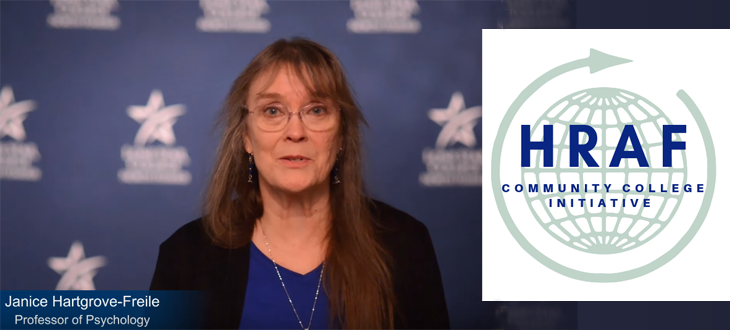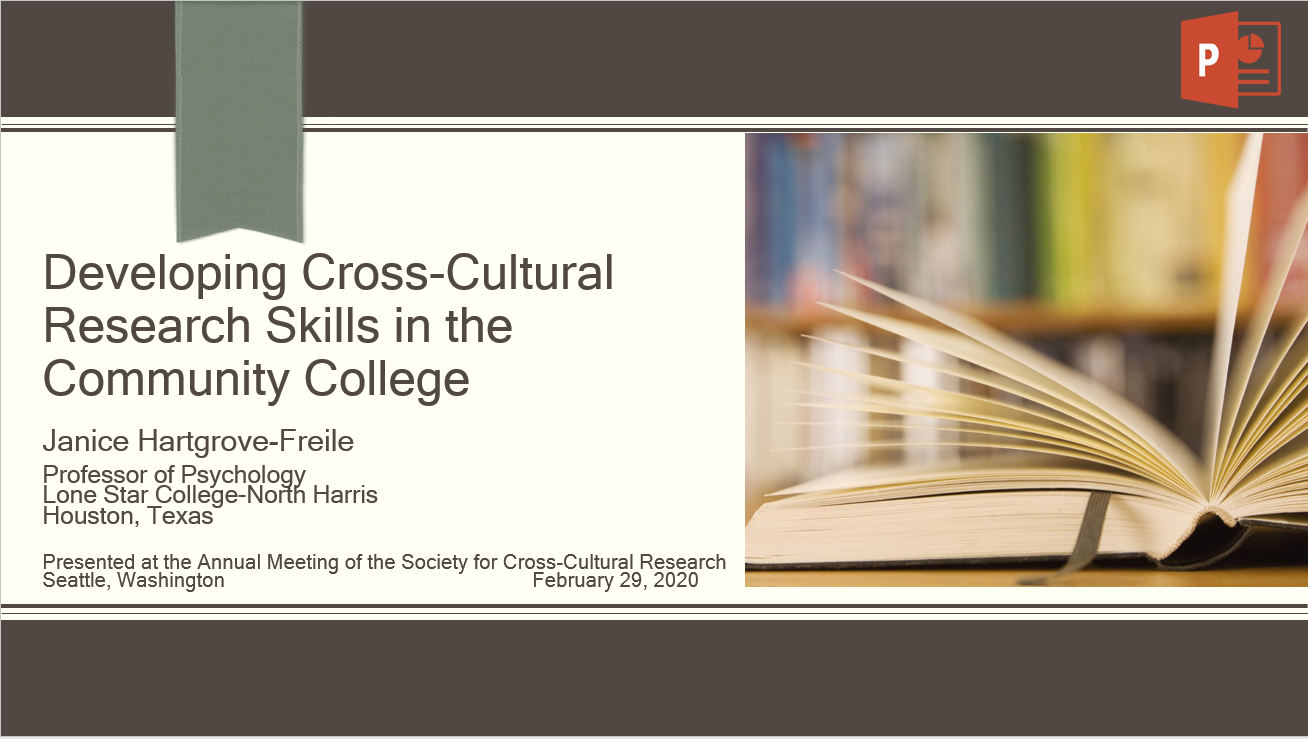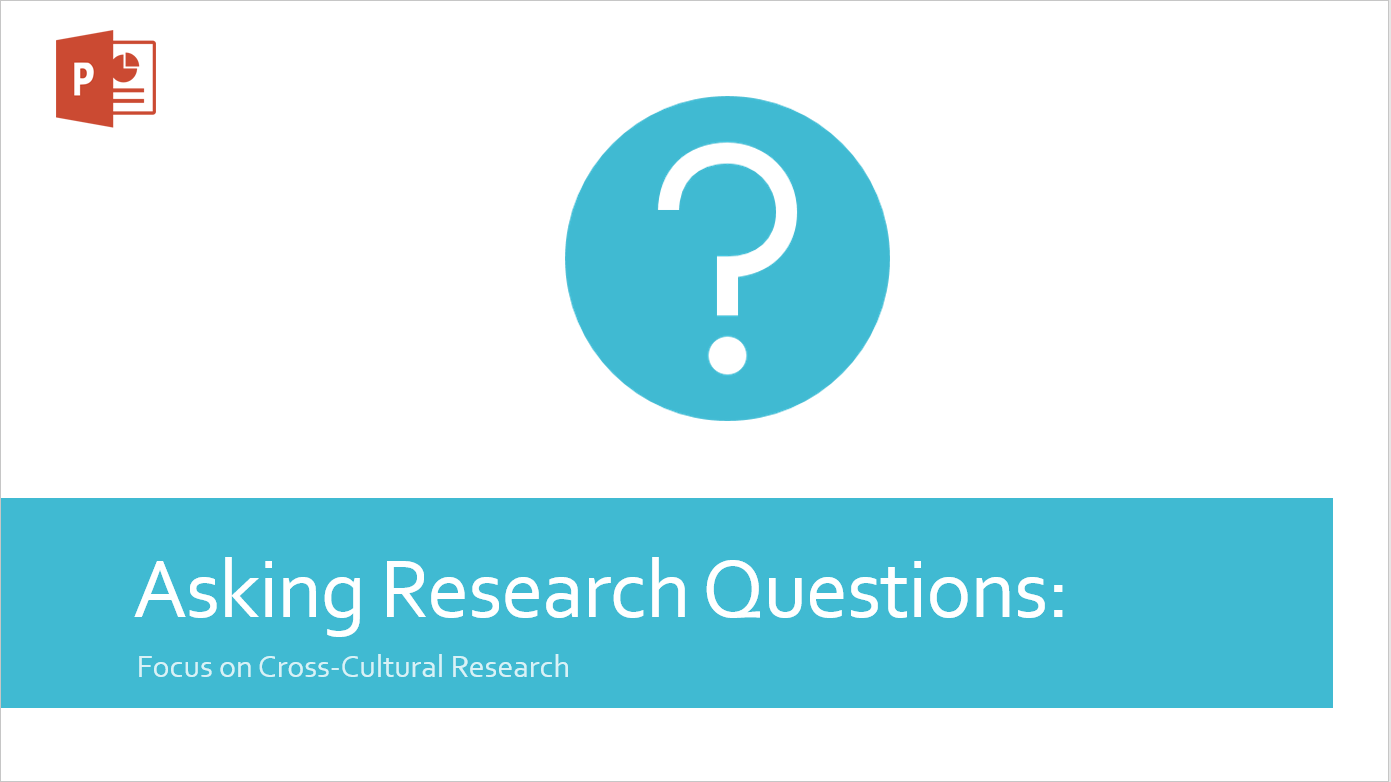
HRAF had the pleasure of interviewing an innovative and extraordinarily dedicated community college faculty member who is a strong advocate for teaching with eHRAF. Janice Hartgrove-Freile is a Professor of Psychology at Lone Star College-North Harris in Houston, Texas. She received her B.A. in Behavioral Science from Rice University and her M.A. in Biopsychology from the University of Houston. Janice pursued doctoral programs in Clinical Neuropsychology at the University of Houston and in Community Health Sciences, Epidemiology, and Biostatistics at the University of Texas School of Public Health. She teaches courses in General Psychology, Lifespan Growth and Development, and Statistics. Janice has also taught as an adjunct faculty member at Houston Community College and the University of Houston. She has been a member of Society for Cross-Cultural Research (SCCR) since 2014. Janice is a community college instructor who is passionate about the HRAF Community College Initiative and about Teaching eHRAF. We are delighted to feature this interview with Janice and to share some of her teaching materials.
My current research involves the needs and challenges of international students in the community college. Most research on international students focuses on four-year and graduate institutions. My hypothesis is that the needs, concerns, and lifestyle patterns of those at community colleges are different than those of students at upper-level institutions.
As a psychology professor, how do you incorporate ethnographic material from eHRAF in your teaching and research?
I incorporate ethnographic research from eHRAF into lectures and assignments. In the Honors course, where students develop, conduct, and report a research project during the semester, I also use it as a tool in the development of research skills. For example, I have one activity concerning the development of answerable research questions and identification of variables using eHRAF. In all of my classes, I have activities that first, introduce and instruct in the use of the database, and, second, introduce specific aspects of various cultures through the database’s primary source materials. This is a boon in the community college because students have less access to many primary source materials and are often online students. The structure of the database also allows a focus on specific aspects of culture and human behavior by locating specific, targeted sections of books and articles that apply to the issue of interest.
As a mentor to instructors developing internationalized courses, I work with faculty from a wide variety of disciplines, from history to business, from chemistry to art. I introduce eHRAF as a way to find resources and develop course material and assignments that incorporate primary source cultural material. The material in the database gives faculty access to studies by those with actual cultural contact. Due to the structure of the database, I can direct a faculty member interested in a particular aspect of behavior or a particular ethnic group to targeted, primary source, methodologically-sound material both for the development of course materials and their own deeper understanding of the behavior and groups of interest.
How does eHRAF fit into the academic curriculum (liberal arts, general education, career training) at a community college?
In addition to the social sciences and humanities, eHRAF fits into the academic curriculum as part of both first year experience and career development coursework. We have a course required of all new students that introduces them to the college experience and the tools that they will need to be successful participants in higher education. This database is an excellent way to introduce search strategies, the reading of primary source materials, and to develop a cross/multi-cultural orientation early in their college careers. The structure of eHRAF allows for easily targeted searches, resulting in the location of segments of material focused on the issue of interest. This is of value throughout the disciplinary spectrum.
eHRAF is a powerful tool for rapid retrieval of information. It can be used in a career development course to effectively demonstrate how a variety of occupations play important roles in any given society and how they intersect with different facets of the same issues. Here is an example of a search in eHRAF that takes only five minutes and yields results relevant to several occupations addressing the public health issue of malaria: a search of the subject term “malaria” in the culture collection for the Tiv of West Africa will yield paragraphs relevant to a social scientist interested in the impact on the community, a biologist interested in disease morbidity, and a nursing instructor interested in a group’s view of the disease and treatment.
How do you use eHRAF in your syllabus and assignments?
eHRAF is used in the development of search strategies, research skills, and accessing cultural content. For example, my “Asking Research Questions” lecture and accompanying class exercise have students first use Carol Ember’s cross-cultural research methods material in Introducing Cross-Cultural Research, then practice those skills through the use of material in the database concerning vocational preferences of Apache boys. While my Honors class focuses more heavily on the research question aspect, my Lifespan class focuses more on the development of vocational identity in adolescence and emerging adulthood.
The most beneficial aspects to my classes are the ability to integrate cross-cultural content with the development of research skills, the ability to access targeted segments of relevant material, and the ease of use of the database.
What unique challenges are presented by the non-traditional demographics of your community college, and how does eHRAF help you to address them?
Community college students are often part-time, working students with families. Even some of the traditional students have responsibilities caring for older family members or younger siblings, or helping in family businesses. Often, community college students are first generation students from minority segments of the population. They have time and resource challenges. eHRAF helps work with some of those challenges in that it is accessible online and provides a way to efficiently access content without having to read extensive material to find targeted, specific information.
How does eHRAF help with understanding cultural diversity for the purpose of internationalizing classes?
One of my roles at the college, and a passion of mine, is assisting faculty in “internationalizing” their courses. This is not just adding a cross-cultural reading to a course; it is a deeply-embedded reworking of course material to incorporate a global perspective that moves out of a Western-centric viewpoint and bias. Greater knowledge develops open mindedness. The ability for both faculty and students to access targeted information about groups outside of their immediate experience helps in the development of that broader, more globally knowledgeable and sensitive view of others. Having access to this global content helps both faculty and students move beyond an ethnocentric view of diverse aspects of human life.
How will you be using eHRAF in transitioning to online teaching?
My teaching exercises work well in an online format since the database is accessible through the college website. The important aspect for the online environment is proper instruction in the use of eHRAF within the context of the specific course. I developed a PowerPoint that does that. I introduce it within the context of a specific activity, but the PowerPoint works as an instructional tool independent of that activity.
I would like to emphasize three elements about the use of the database. First, eHRAF is accessible; second, eHRAF provides an enormous array of content from both a cultural and historical viewpoint; third, eHRAF provides for the teaching of research skills within the context of cross/multi-cultural content. For those of us in community colleges who often lack the background in or opportunity for direct contact with other cultures, the database provides the next best thing- a wide array of accessible, able-to-be-targeted primary source material from those who have had that opportunity.
We would like to thank Janice for her thoughtful responses to our questions and for sharing her engaging materials for teaching and learning with eHRAF.


